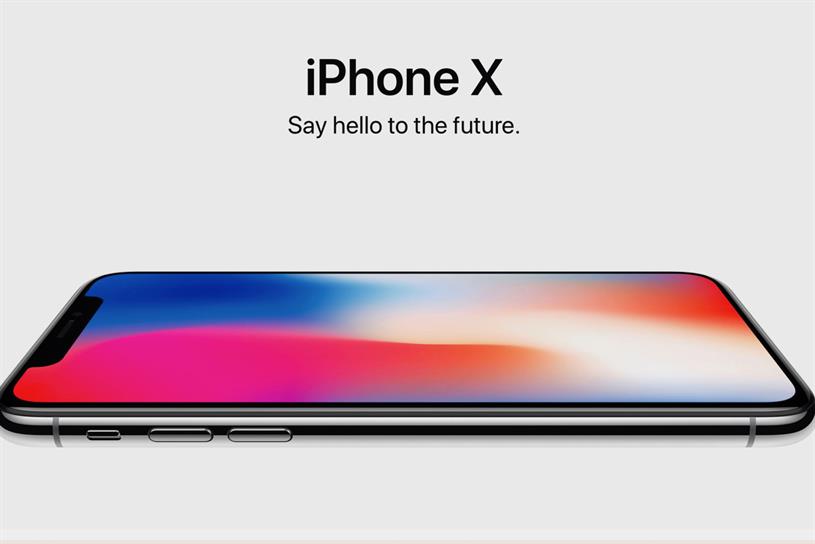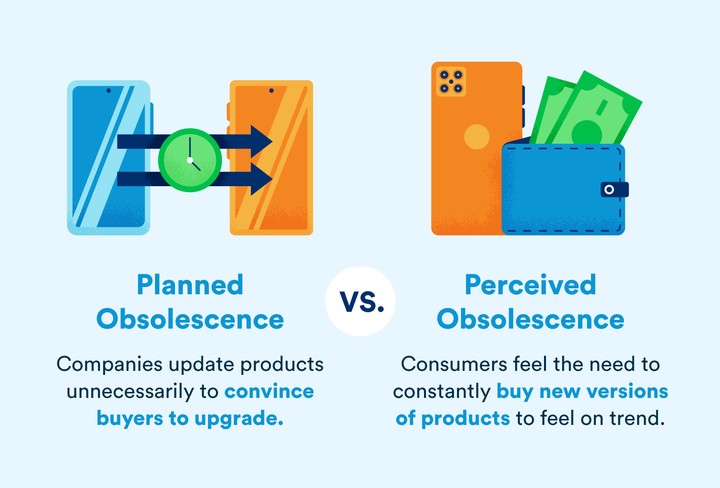
Apple: Think Different.
Microsoft: Be What’s Next.
Intel: Leap Ahead.
These major corporations have slogans that all encompass innovation, creativity, and advancements in their fields. Hence, advertisers who work with these manufacturers rely on new products and updates for which to maintain their markets.
Planned obsolescence is a concept that encourages new inventions and revisions to existing models. It relies on past products to become unusable because of intended wear, undesirable due to design perception, or far less preferable to a new version. Making one item obsolete increases demand and, therefore, purchases of another product. This process is conducive to a linear production model, where products have a predictable end-of-life represented by disposal, rather than being recycled, repurposed, or repaired.

While this rejection of a circular production style increases waste, it does lead to most individuals who work in the fields of advertising or marketing to favor planned obsolescence. It allows them to market more frequent developments of new products, improvements, and designs. Furthermore, planned obsolescence is seen to encourage innovation. By forcing items out of production, designers are forced to progress into new ideas and collaborations, promoting advancements in the fields of technology, construction, and even fashion.
In a graduate school paper from Osaka, Japan, the impacts of marketing are analyzed. Advertising is not a response to a great product having been created, but rather makes or breaks the success of an item in terms of attention and sales. The investigation concludes that marketing can determine the efficiency of sales and lifespan of a product.

This process of perceived obsolescence all began in 1924 with the president of General Motors producing annual stylistic upgrades to their vehicle design to encourage new purchases from consumers before their current car was actually in need of replacement. Today, this can be viewed in how Apple releases iPhones with slight color alterations and minimal upgrades to capabilities.
Regardless, it sustains the employment and missions of advertisers for all of these companies, hence, why they would support the utilization of planned and perceived obsolescence.
Source:
tmd6040
April 12, 2024 — 2:53 pm
Now that you mention it, I think perceived obsolescence is much more of an issue than planned obsolescence when it comes to cell phones. Phones do usually last a long time, yet consumers replace them at a much faster rate. I think that, as consumers, we need to be more mindful when it comes to viewing advertisements. Sure, they’re making it look flashy, but what are they really changing here? Is it truly worth upgrading? Policies targeted toward manufacturers would be helpful, but it would also be helpful if our society changed its values and behaviors.
kac6972
April 12, 2024 — 4:33 pm
I agree with Tyler’s comment. I know many people who have replaced their perfectly functional iPhones with an upgraded version simply because they wanted an extra camera lens or they liked a new color that was released. I had also never thought about how the advertising slogans from tech companies that you mentioned encourage perceived obsolescence. They are perpetuating the false narrative that a new product is a better product, when in reality, all products likely have the same capabilities.